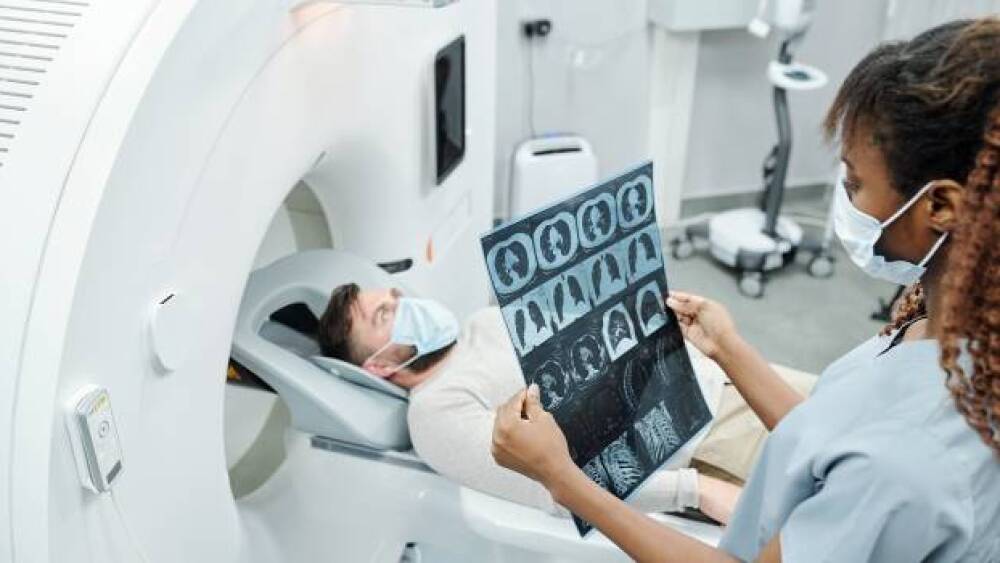LONDON and WELLINGTON, New Zealand, Nov. 14, 2016 /PRNewswire/ -- Volpara Solutions today announced that volumetric breast density percentages generated by VolparaDensity software have been incorporated into the latest version of the Tyrer-Cuzick Breast Cancer Risk Assessment Tool. Despite being recognized as a major independent risk factor for cancer, breast density has not previously been included into a major breast cancer risk model.

The Tyrer-Cuzick Tool is the first widely recognized risk model that includes family history, genetic factors and breast density. The tool accepts three breast density measurement methods, including VolparaDensity, which provides a woman's volumetric breast density percentage, and two visual assessment techniques. The Tyrer-Cuzick Tool calibrates the risk according to the breast density measurement method used.
The Tyrer-Cuzick Risk Assessment Tool informs doctors of a woman's risk of developing breast cancer and helps them make decisions about genetic testing and supplemental breast cancer screening. The Tyrer-Cuzick model incorporates family history, endogenous hormonal factors, benign disease, risk factors such as age and body mass index, as well as genetic factors (including BRCA) into a single statistical model. It estimates the likelihood of a woman developing breast cancer within 10 years of her current age and over the course of her lifetime. Independent clinical studies have shown the Tyrer-Cuzick model to be the most consistently accurate when compared with other available risk assessment models.
"Multiple studies have demonstrated that mammographic density is a strong breast cancer risk factor. After extensive independent testing on multiple data sets, we are pleased to now incorporate volumetric breast density percentages from VolparaDensity as one method of adding breast density into our risk assessment tool. VolparaDensity has strong predictive value, which we believe will help identify high-risk women and guide clinical decisions about adjunctive screening options based on their specific risk factors," said Jack Cuzick, PhD, FRS, John Snow Professor of Epidemiology, Director, Wolfson Institute of Preventive Medicine, Queen Mary University of London.
Cleared by the FDA, HealthCanada, the TGA and CE-marked, VolparaDensity is in use at sites across the globe helping radiologists assess breast density more objectively and helping them better consider who might benefit from additional screening. Volpara Solutions technologies, including VolparaDensity, are currently in use in 35 countries, and more than 9 million women have had their breast density analyzed using VolparaDensity.
"As doctors increasingly talk to patients about risk, there is growing interest in implementing personalized screening strategies rather than relying on population-based guidelines. The integration of volumetric density percentage into the Tyrer-Cuzick risk model is a critical step in improving risk prediction. It gives women personalized knowledge and helps them make decisions about screening and their breast health," said Jennifer Harvey, MD, Professor of Radiology at the University of Virginia School of Medicine.
"Researchers have worked for years to validate that a volumetric density percentage measure has the reliability and reproducibility to be included in a standardized breast cancer risk model," said Ralph Highnam, Ph.D., Volpara Solutions CEO and Chief Scientist. "The Tyrer-Cuzick risk assessment model is widely recognized by clinicians and payors for accuracy. We are proud that Jack Cuzick and the team at Cancer Research UK have integrated VolparaDensity, which will help physicians implement tailored screening for women."
About Volpara Solutions
Founded with the goal of helping radiologists give women the most accurate information possible regarding their breast health, Volpara Solutions is the wholly owned sales and marketing arm of Volpara Health Technologies Limited of New Zealand (formerly Matakina Technology). Available in most markets where breast cancer screening is commonplace, VolparaDensity provides an objective volumetric measure of breast density from both digital mammography and tomosynthesis data. VolparaDensity is part of a suite of quantitative breast imaging tools built on the Volpara Solutions algorithm that allows for personalized measurements of density, patient-specific x-ray dose, breast compression, breast positioning and other factors designed to provide critical insight for breast imaging workflow. For more information, visit www.volparasolutions.com.
About the Tyrer-Cuzick Risk Assessment
The Tyrer-Cuzick risk assessment tool was developed by scientists at the Wolfson Institute of Preventive Medicine, Queen Mary University of London and is provided for non-commercial research purposes only. No responsibility is accepted for clinical decisions arising from its use. Commercial use requires a licence from Cancer Research Technology. For further information around licensing, visit http://www.cancertechnology.co.uk/ibis-software-tyrer-cuzick-model.
About Queen Mary University of London
Queen Mary University of London (QMUL) is one of the UK's leading universities, and one of the largest institutions in the University of London, with 20,260 students from more than 150 countries. A member of the Russell Group, we work across the humanities and social sciences, medicine and dentistry, and science and engineering, with inspirational teaching directly informed by our research - in the most recent national assessment of the quality of research, we were placed ninth in the UK (REF 2014). QMUL has an annual turnover of £350m, a research income worth £100m, and generates employment and output worth £700m to the UK economy each year.
Logo - http://photos.prnewswire.com/prnh/20160713/389465LOGO
To view the original version on PR Newswire, visit:http://www.prnewswire.com/news-releases/volparadensity-selected-to-be-included-in-latest-version-of-tyrer-cuzick-breast-cancer-risk-assessment-tool-300361798.html
SOURCE Volpara Solutions





